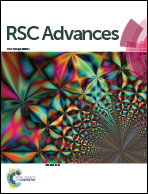Recovery of NH4+–N and PO43−–P from urine using sludge-derived biochar as a fertilizer: performance and mechanism†
Abstract
Sludge-derived biochar (BS) was prepared by pyrolyzing municipal sludge at different temperatures and was used to recover NH4+–N and PO43−–P from urine. The effects of dosage, adsorption time, and urine concentration on the adsorption of NH4+–N and PO43−–P were investigated, and the adsorbed BS was used as a fertilizer to study its effect on the growth of pakchoi cabbage. The Elovich model was more consistent with the adsorption processes of NH4+–N and PO43−–P. Both the NH4+–N and PO43−–P adsorption isotherm model agreed with the Redlich–Peterson model. The Langmuir model showed that the largest adsorption capacity of BS600 for NH4+–N and PO43−–P could reach 114.64 mg g−1 and 31.05 mg g−1, respectively. The NH4+–N adsorption mechanism of BS may have complexation with O-containing functional groups and precipitation reactions, while the removal mechanism of PO43−–P was co-precipitation. The pot experiment demonstrated that adsorbed BS600 can better promote the growth of pakchoi cabbage with the same amount of addition. With the addition of 5% adsorbed BS600, the weight of cabbage was 64.49 g heavier than without the addition of BS600. This research provided theoretical support for the recovery of NH4+–N and PO43−–P from urine as a fertilizer.



 Please wait while we load your content...
Please wait while we load your content...